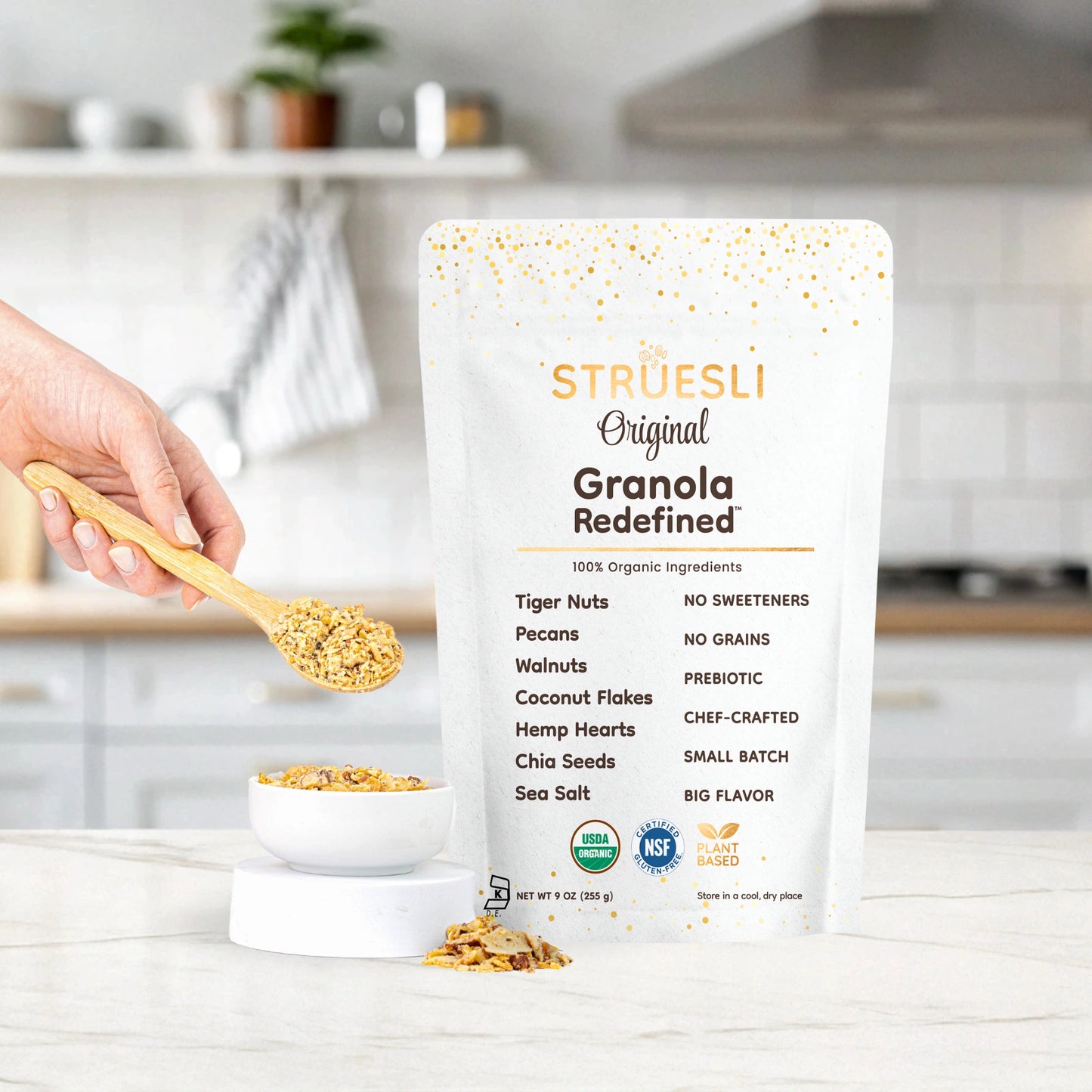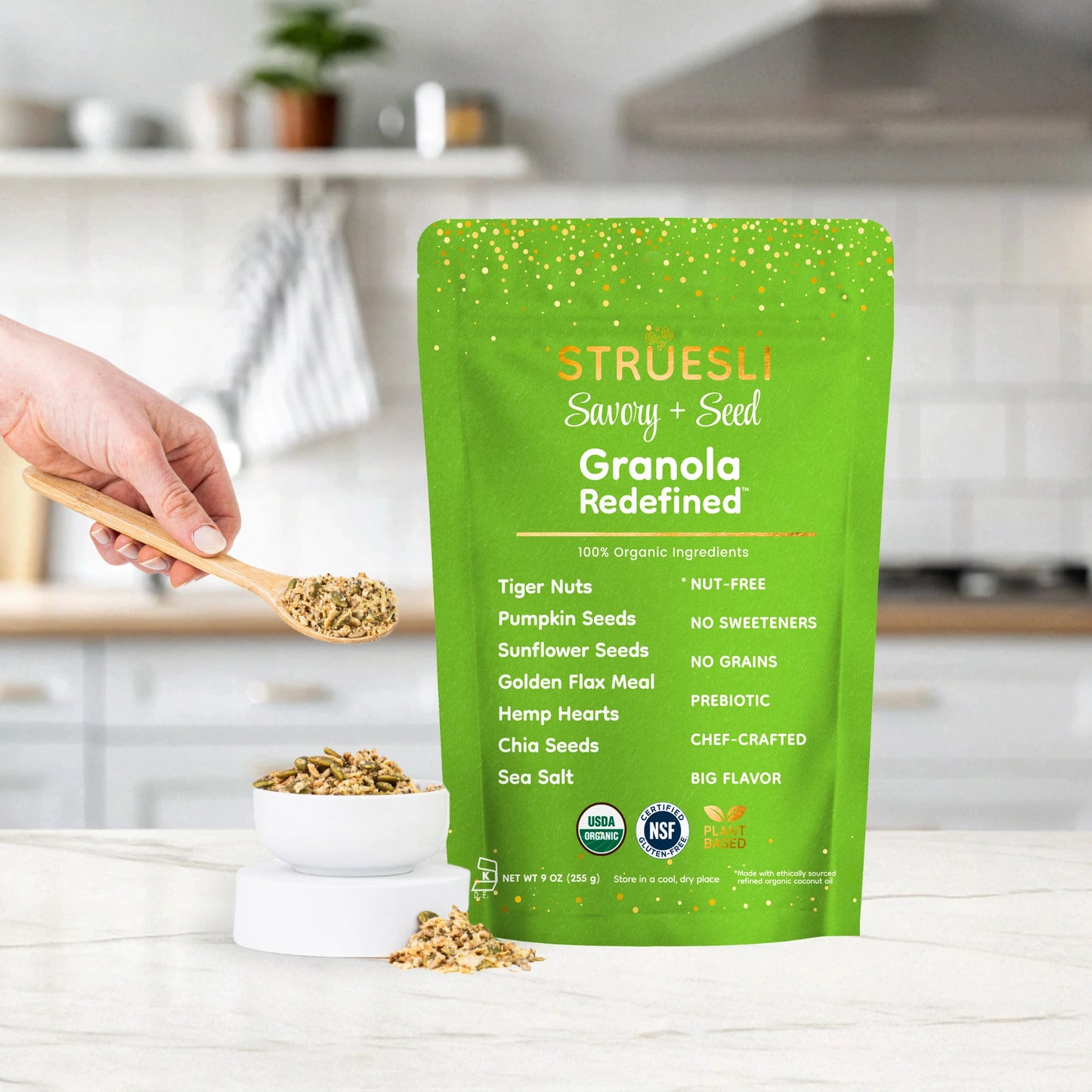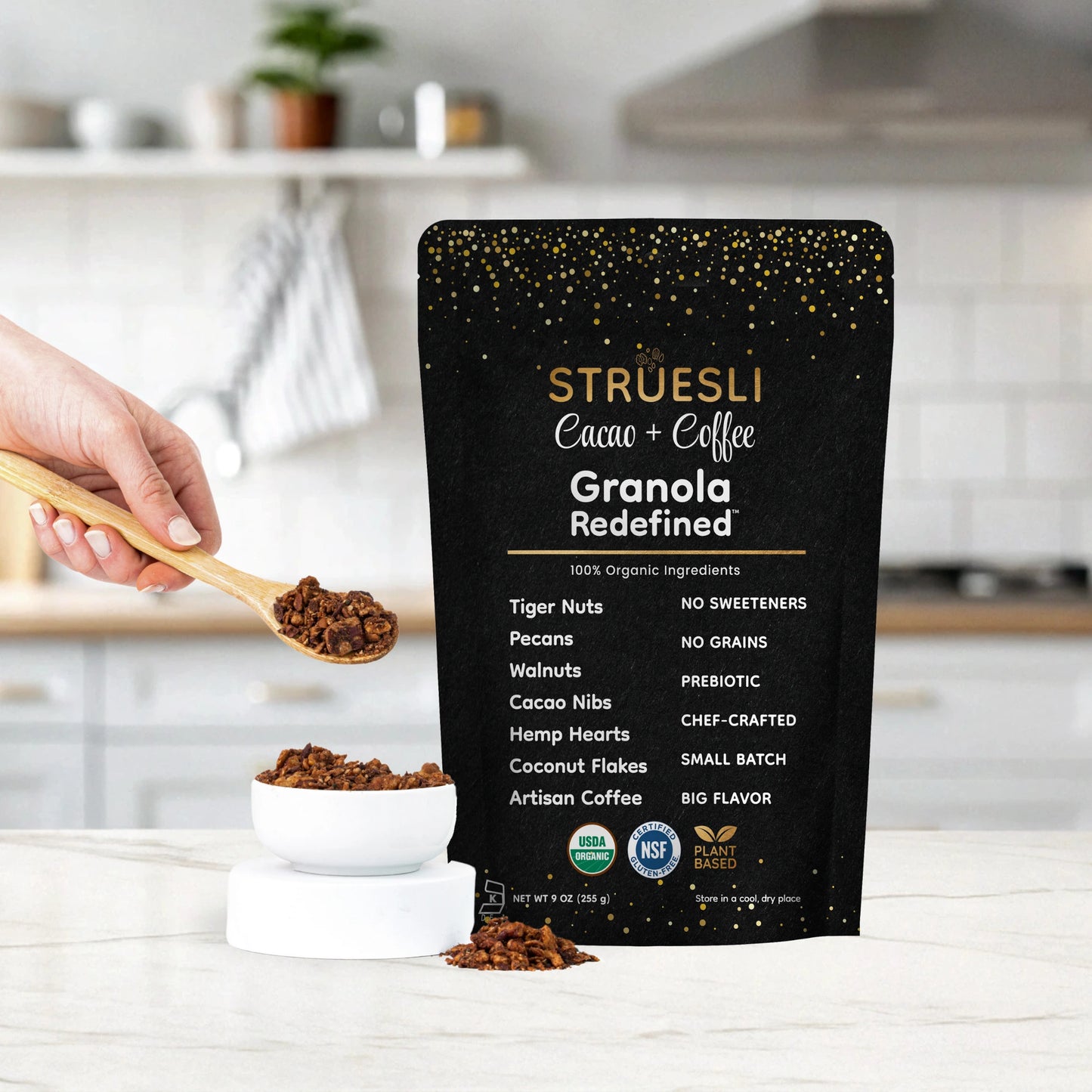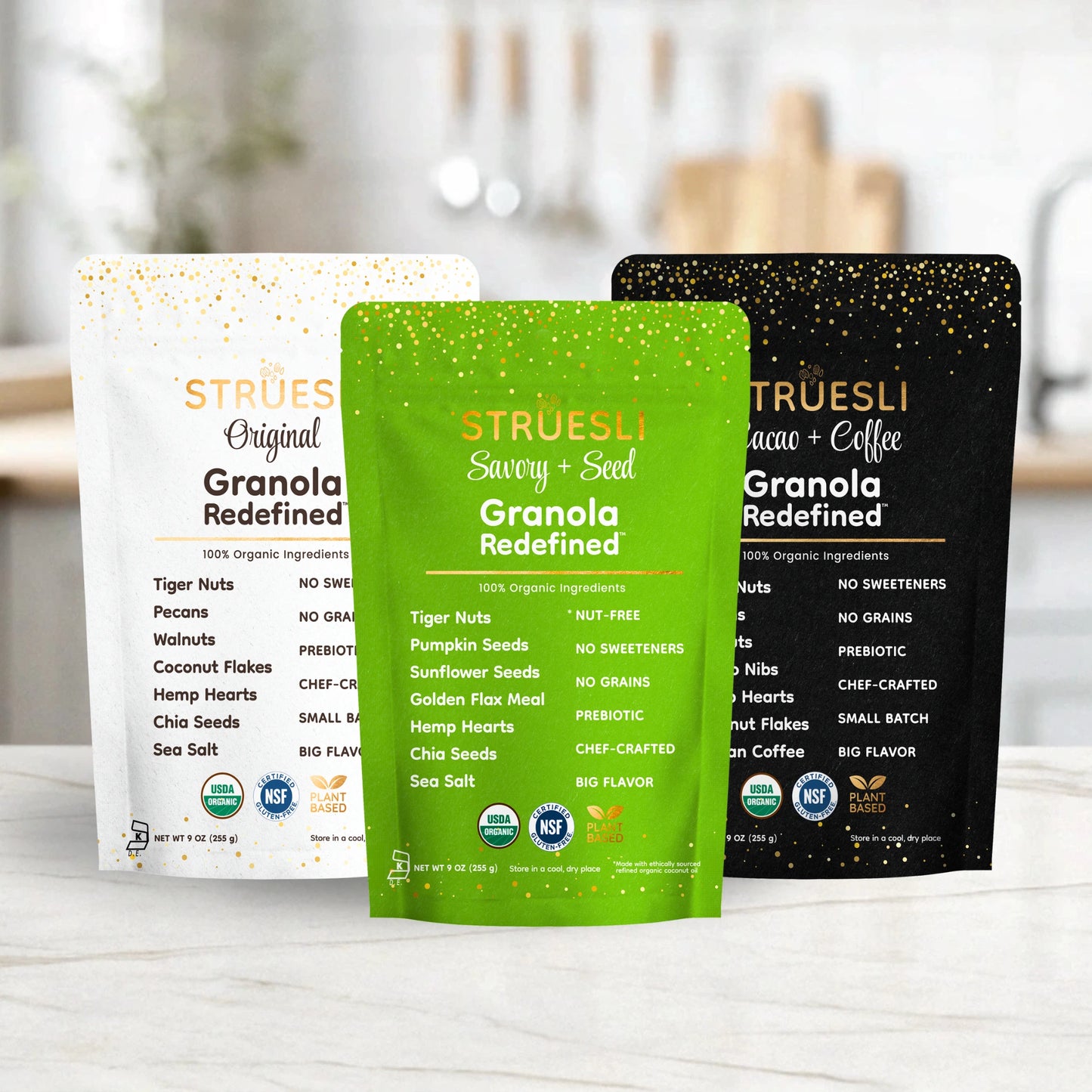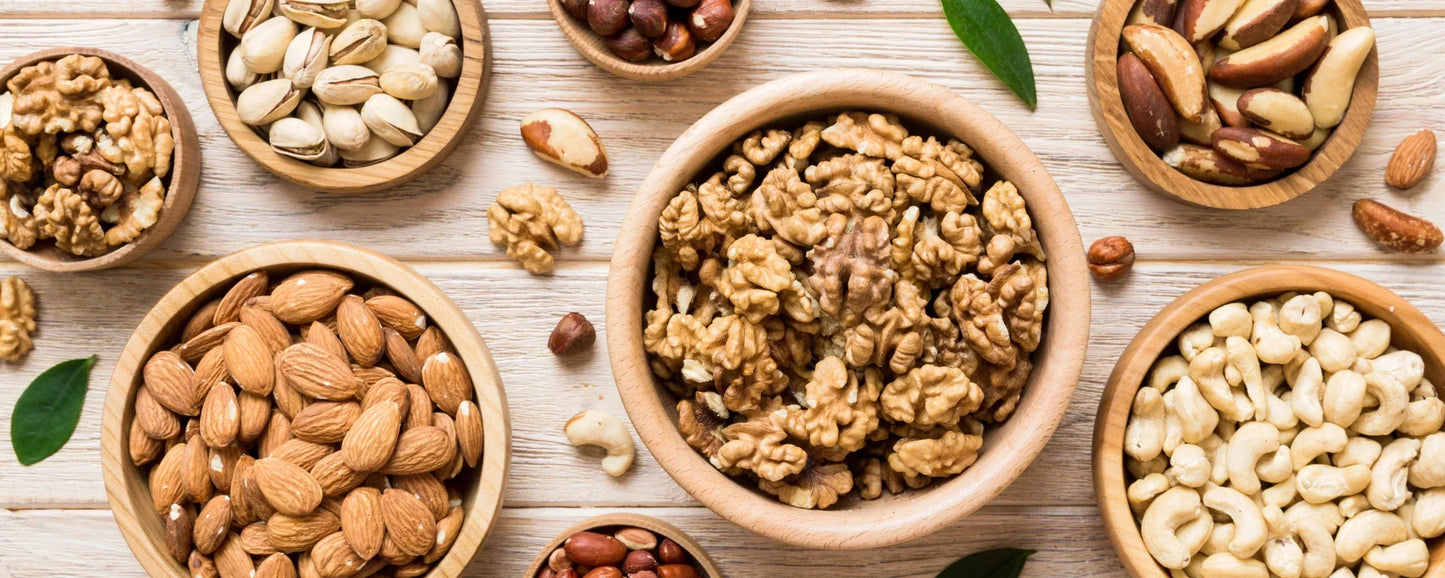
A lot has been said about dietary fat, yet we’ve still been slow, as a country, to embrace fat as the life-sustaining, brain-building, essential nutrient that it is. Fat is flavor. Fat is nutrition. And, yes, fat is good for you. Gone are the days of low-fat dieting, making way for a better understanding of fat’s important role in our health. Let’s break down the significance of fat, the best ways to get it, and the smart composition of fats in Struesli.
Why Fats Are Essential for Health and Nutrition
All fats, including those vilified saturated fats, play an important role in your body. When you eat dietary fat, your body digests those into fatty acids that are used to help your body absorb certain vitamins, support the growth of your cells, transport hormones, provide energy, and even improve mental and physical performance.
Most studies on dietary fats have looked at the impact they have on blood lipids. Blood lipids can be helpful or harmful, depending on the type, and their main role is to move cholesterol, a waxy substance that your body uses to make vitamins and hormones. As with most things, having too much cholesterol in your blood has poor implications for your health.
Dietary fats that result in increases of LDL blood lipids are not preferred, since LDL lipids are poor transporters of cholesterol and result in the build-up of cholesterol in your arteries. On the other hand, dietary fats that can increase HDL blood lipids are preferred, since HDL lipids help your bloodstream and body get rid of cholesterol.
Understanding Good Fats vs Bad Fats
Depending on how they impact cholesterol, dietary fats have been labeled as "good" or better for you versus "bad" or worse for you.
Sources of saturated fats, including meats and dairy, have been linked to:
- increasing LDL (not good)
- increasing HDL (good)
Sources of unsaturated fats, including plant oils, nuts, avocados, and seeds, have been linked to:
- decreasing LDL (good)
- increasing HDL (good)
Sources of trans fats have the double whammy of:
- increasing LDL (not good)
- decreasing HDL (not good)
For health, trans fat should be avoided. They’re so bad for you that trans fats have been banned in the U.S. and many other countries, as no amount of them has been deemed safe to consume. These types of fats are created industrially and used to appear in many types of processed and fried foods. As they are being phased out, you can avoid them further by not eating foods that contain partially hydrogenated oils in the Ingredient List.
The Role of Omega-3 and Omega-6 Fatty Acids
Additionally, there are two special types of unsaturated fats which your body can’t make on its own. These are omega-3 fatty acids and omega-6 fatty acids. These two types of essential fatty acids play an important role in controlling hormones, reducing inflammation, increasing immunity, and lowering blood pressure. For all these reasons, most nutrition experts suggest getting the majority of your dietary fats from foods that contain a higher ratio of unsaturated fats.
The Types of Fats Found in Struesli
Many of the plant-based foods that make up Struesli contribute some dietary fats. And because of the smart and delicious combinations, what you’re getting is the ideal amounts and ratios of fats that can improve health. That means you’re getting mostly unsaturated fats (including essential omega 3s and omega 6s), a little saturated fat (in a fast-digesting form called medium-chain triglycerides), and zero trans fats. In Struesli, here’s where those optimal amounts and types of fats are coming from:
-
Pecans and Walnuts: Most of the fat in these two types of tree nuts is unsaturated fats, which can help build that optimal blood lipid profile we mentioned above. Additionally, walnuts contribute omega-3s and omegas-6s linked to lowering inflammation.
-
Coconut Oil, Coconut Flakes, and Coconut Butter: Struesli contains coconut in these three different forms, all of which contribute fat. The high-quality organic and extra virgin coconut oil and coconut butter in Struesli contains mostly saturated fat. Some studies show that the medium-chain triglycerides found in coconut are more quickly digested that other types of saturated fats and may be linked to appetite control. In addition to the fat you get from the toasted coconut flakes in Struesli, you also get some fiber, which has also been linked to lower cholesterol.
- Hemp Hearts, Flax Meal, and Chia Seeds: These three ingredients are unique to Struesli and you won’t find all three of them in many other granolas. They contribute a wonderful ratio of good-for-you essential fatty acids, including omega-3s that have wonderful heart and body benefits, and that we all should be eating more of.
Why We Use Coconut Fats in Struesli
By using coconut oil and coconut butter, we're able to achieve a 100% plant-based food and the delicious crispy texture and flavor you love in Struesli. We believe that the coconut fats in Struesli make it a filling and nutrient-dense food with the wonderful brain boosting, antioxidant, and HDL-improving effects of fat without the same LDL increasing effect that you might see from butter or other animal sources of saturated fat.
Prioritizing Sources of Healthy Fats
To recap, we know that 1) eating fat is necessary, 2) some fats are essential and your body can only get them from certain foods, 3) trans fats should be avoided, and 4) eating mostly unsaturated fats is a good way to help your body achieve optimal blood cholesterol levels. Optimal blood cholesterol (of less than 200) is not a sexy health goal, but it’s an extremely important one.
Whenever you can swap healthy fats for less healthy choices, it's a good idea to do so. Here are a few easy ways:
- Use olive oil as your main cooking oils
- Whenever possible, swap olive oil for butter
- Choose plant-based sources of saturated fats (such as coconut) over animal-based sources of saturated fat (such as butter)
- Choose fatty fish as your protein for at least one meal/week
- Snack on foods with nuts and seeds, such as Struesli
- Add avocado as a creamy condiment
- Choose lean, grass-fed animal proteins
Written by Jessie Shafer, RD
Updated February 27, 2025

